
Visual Art |
Up |
Prev |
Next |
"Pink", the hue, is one quarterway between Magenta and Red. In its brighter tones it is truly striking and once seen it is never forgotten! It is the hue of various flowers, tubers and fruits. It is associated with femininity, sensitivity, tenderness, childhood, homosexuality and the romantic.
"Pink", the colour name, comes from the small pink flowered plants of certain species of the genus Dianthus called "Pinks" and was first used in the late 17th century. This usage in turn may have come from the word for scalloping of the edges of cloth, as is the case with the edges of the Dianthus flower. The name has suffered from a lack of specificity, even though the colour of the flower it came from was spot on. People even today use the word to refer to almost ANY light colour between Red and Violet. This lack of discipline means the word has become almost meaningless and is a good example of what I seek to address in preparing this colour wheel.
It is important to remember that, like most of the colours between Red and Blue, Pink is not a "real" colour, that is, it is not a "spectral" colour, ie there is no single wavelength of light that is "Pink". Despite being included in the words to the song: "Sing A Rainbow", there is no Pink in the rainbow! (Nor for that matter is there any Purple although there is a shade of Violet). Pink is ALWAYS a combination of red and blue light and the colour itself exists only in the human brain. Perhaps for this reason true Pink is fairly rare in nature. Many flowers, fruits and birds that you think of as a "pink" exist in the categories closer to Red.
The inaccuracy of the words to above mentioned song amply demonstrate the ignorance of most people when it comes to colour; They think they know colour but they don't! It is to address such ignorance and wrong-headedness that I have created this wheel in the first place. This wheel is the result of years of work on my part involving a great deal of research. Read and learn!
There was been a dearth of good pigments and dyes for this hue until quite recently. Traditionally there was nothing that was even remotely close and mixing blues and reds was not satisfactory either as the results were dull and dirty due to the lack of clean bright Blue or Violet pigments. Today there are spectacular bright Pinks available thanks to the Quinacridones, which were first sold as pigments by Du Pont in 1958.
| Light Pink | Garden Pink | Musk Sticks |
| HSB 321°, 32%, 100% RGB 255, 173, 236 |
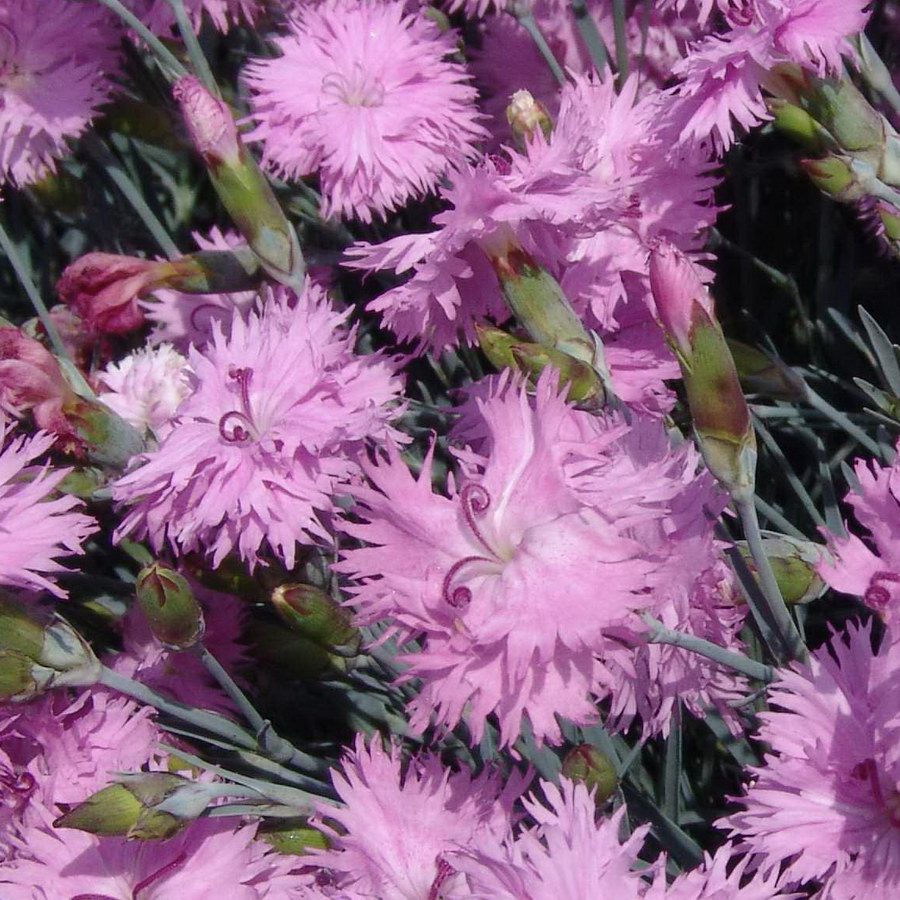 |
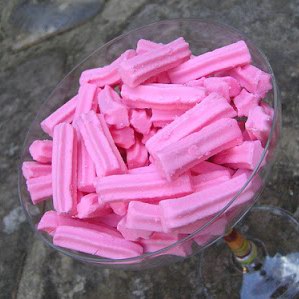 |
| "Light Pink" is the colour of various flowers, namely cultivars of dahlia, sweet pea and pinks. It is also used for certain confectionary items. | Garden Pinks, aka Wild Pinks (Dianthus plumarius), are herbaceous perennial flowering plants of the genus Dianthus and are closely related to the Carnation. They have been widely cultivated and come in a variety of colours and tones, mainly around Pink. This pale Pink cultivar is called "Julica". | Musk Sticks are well known and much loved by those who grew up in Australia and New Zealand. Of course, Musk is a smell of course, not a colour, but if it were it would be this! The colour of musk sticks has varied quite a bit over the years depending on which food colouring was used and how much. Nevertheless this is the colour that I remember with affection. Note that Light Pink is the colour of the lit side, not the shaded. |
| Pink | Maiden Pink | Pink Fish |
| HSB 316°, 100%, 100% RGB 255, 0, 187 |
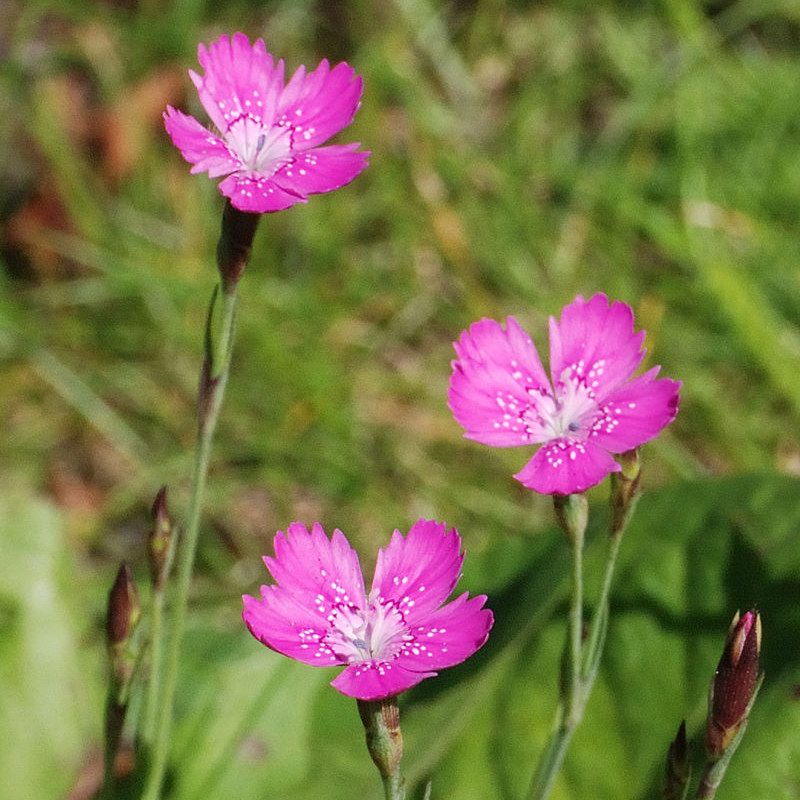 |
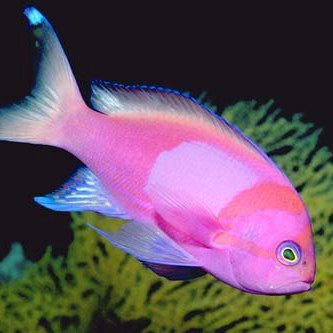 |
| "Pink" is the colour of various flowers namely cultivars of dahlia, sweet pea and pinks, also of certain fish. It is perhaps the most striking colour of all and consequently is often used for women's clothing and lipstick. | Maiden Pinks (Dianthus deltoides), are small flowering plants of Europe and Western Asia and introduced to North America. They are widely cultivated but can still be found in the wild form which is a true Pink. | Fish, especially coral reef fish, come in a bewildering range of brilliant colours and that includes Pink. I don't know what species this one, perhaps someone could enlighten me? |
| Dark Pink | Pigface | Missing |
| HSB 310°, 100%, 71% RGB 181, 0, 152 |
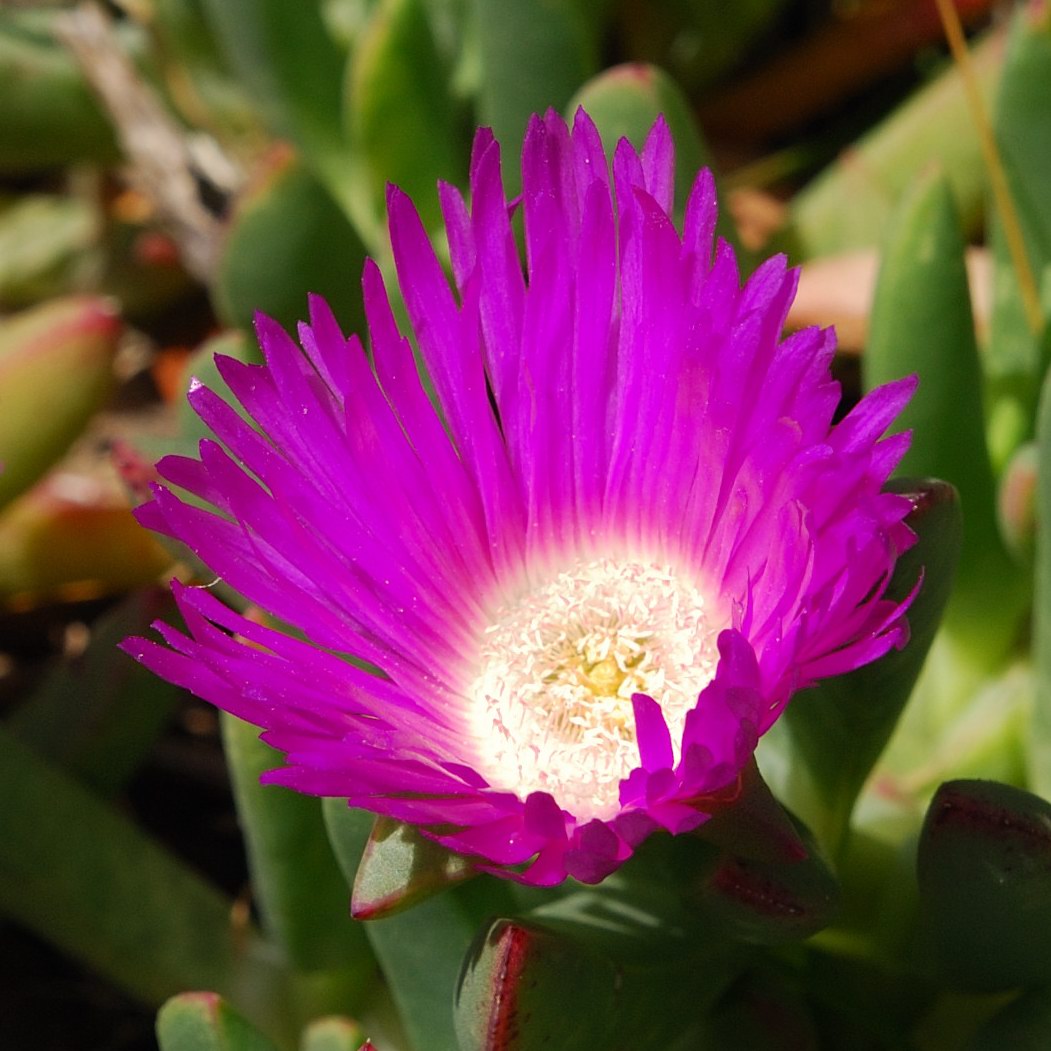 |
 |
| "Dark Pink" is the colour of certain flowers, some women's clothing and lipstick. | Pigface (Carpobrotus) aka "Ice Plant" is a genus of ground-creeping plants with succulent leaves and medium sized purple flowers. They are native to South Africa, South America and Australia but have invaded other parts of the world in recent times. Most species are Dark Pink in good light although there are a few species that are yellow. | If you find another natural object of the colour swatch on the left please email me. |
| Purple Bougainvillea | Purple Bougainvillea | Purple Sweet Potato Light |
| HSB 310°, 100%, 55% RGB 140, 0, 117 |
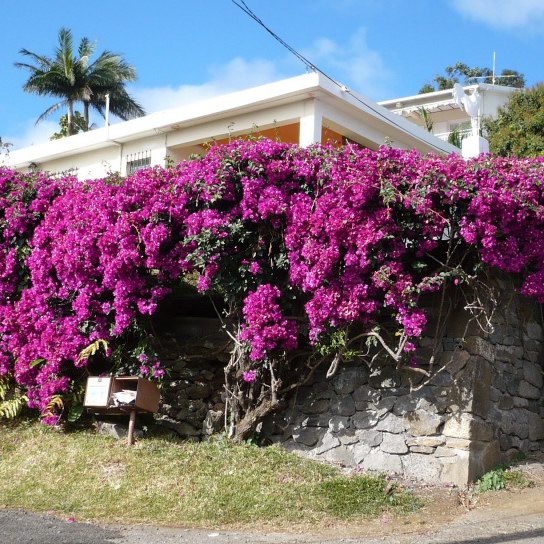 |
 |
| "Purple Bougainvillea" is the colour of certain flowers, some women's clothing and the flesh of certain tubers. | Bougainvillea is a South American ornamental vine. The spectacular colour is not the flowers but the bracts. As the vine is hardy and puts on a truly spectacular show for a long time it is widely cultivated around the world. There are various colours of course, including white and red but the 3 main colours are in this hue. This is the Dark tone of the three. Of course the colour also varies with the light. | Sweet potatoes vary greatly in colour both in skin and in flesh. Some have purple flesh. This is a light version. |
| Purple Bean | Purple Bean | Purple Sweet Potato Dark |
| HSB 310°, 100%, 35% RGB 89, 0, 75 |
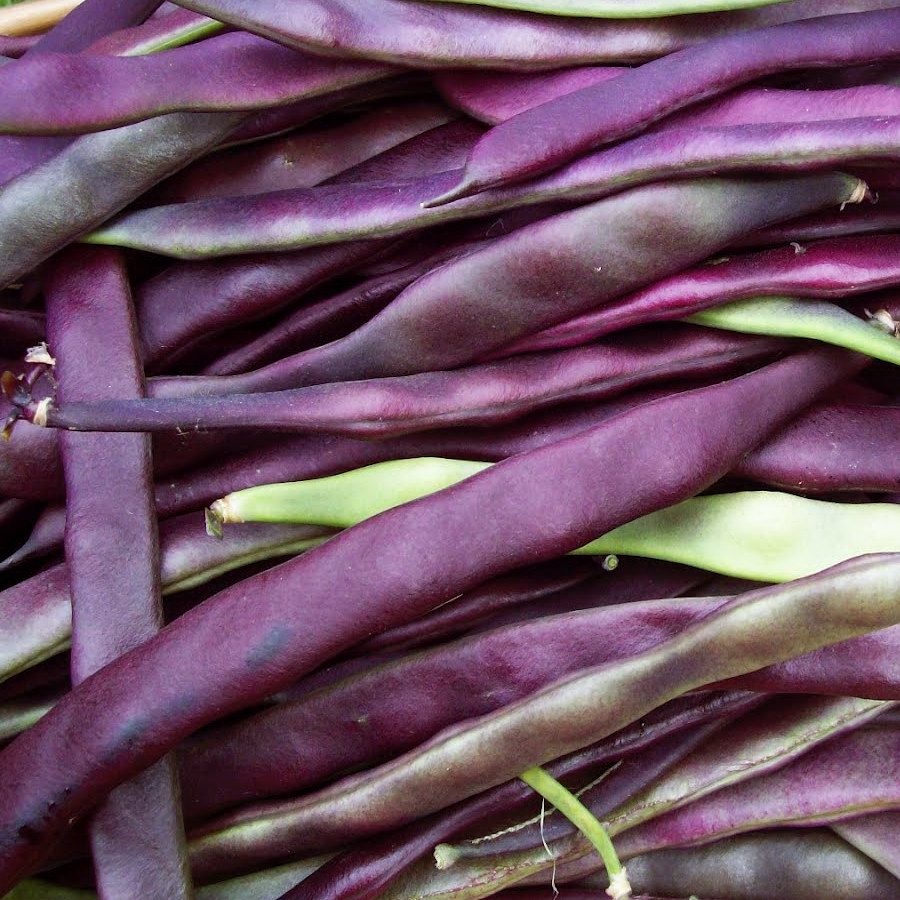 |
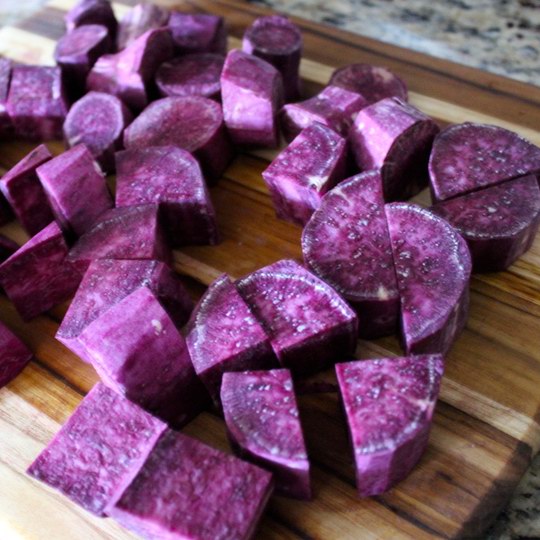 |
| "Purple Bean" is the colour of various tubers, fruits and seed pods. It, (like almost every colour), is also occasionally used for women's clothing. | Purple Beans do vary in colour and need to be fully ripe before the green turns to purple. | There are many hues of sweet potato. Here is a dark purple fleshed form. |